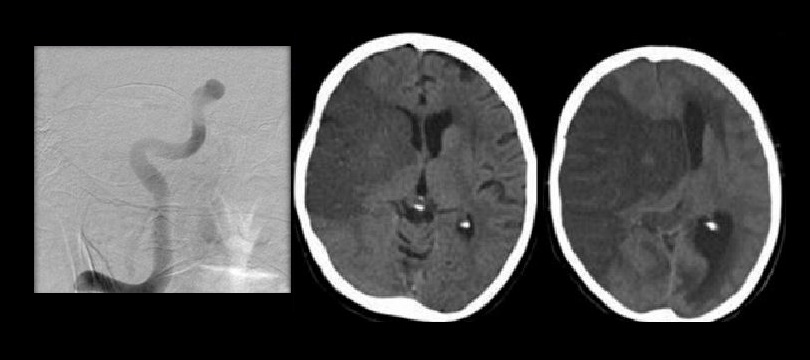The protocol can be used to provide lifesaving decompression surgery in a timely manner, researchers say.

Three simple clinical characteristics—systolic blood pressure and glucose level at admission as well as CT angiography ASPECTS—can be used to identify patients with anterior circulation acute ischemic stroke who are most likely to experience malignant middle cerebral artery (MCA) infarction, according to a new analysis.
Malignant MCA infarction “is one of the most serious complications of ischemic stroke, leading to deterioration of consciousness over the first 24-48 hours,” write researchers led by Alessandro Davoli, MD (University of Tor Vergata, Rome, Italy). The complication, they say, “represents between 1% and 10% of all supratentorial ischemic stroke and is characterized by a mortality rate of nearly 80%.”
While decompression surgery can improve outcomes, its efficacy is very time-dependent. Thus, according to Davoli and colleagues, it would thus be of great clinical importance to be able to predict malignant evolution. This study, published online last month ahead of print in the Journal of NeuroInterventional Surgery, aimed to do just that.
The investigators identified 98 patients from a prospective single-center database who had acute ischemic stroke secondary to large intracranial vessel occlusion of the anterior circulation and were treated endovascularly. Of these patients, 35 (35.7%) developed malignant MCA infarction.
Multivariate analyses revealed that neither the rate of successful reperfusion nor the time from stroke onset to reperfusion were predictors of malignant MCA infarction. What did predict the complication was systolic blood pressure on admission, blood glucose on admission, and ASPECTS.
Independent Predictors of Malignant MCA Infarction
|
|
OR (95% CI) |
P Value |
|
Systolic Blood Pressure on Admission (mm Hg) |
0.971 (0.950-0.992) |
0.008 |
|
Blood Glucose on Admission (mg/dL) |
0.987 (0.976-0.998) |
0.024 |
|
CT Angiography ASPECTS (per point) |
1.640 (1.216-2.212) |
0.001 |
A score of ≤ 5 in CT angiography ASPECTS was the best cutoff to predict malignant MCA infarction, with a sensitivity of 46%, specificity of 97%, positive predictive value of 78%, and negative predictive value of 65%.
Taken together, systolic blood pressure and blood glucose level at admission plus CT angiography ASPECTS correctly classified the presence of malignant evolution in a total of 82.65% of patients.
While they acknowledge limitations to their study, including a long period of data collection, during which time protocols and levels of expertise evolved, and an overall high rate of malignant MCA infarction, the authors conclude that a practical predictive model using easy-to-obtain clinical data can effectively identify patients likely to experience malignant evolution. This can, in turn, optimize the possibility that they will receive decompression surgery in a timely manner.
Source:
Davoli A, Motta C, Koch G, et al. Pretreatment predictors of malignant evolution in patients with ischemic stroke undergoing mechanical thrombectomy. J NeuroInterv Surg. 2017;Epub ahead of print.
Disclosures:
Davoli reports no relevant conflicts of interest.

